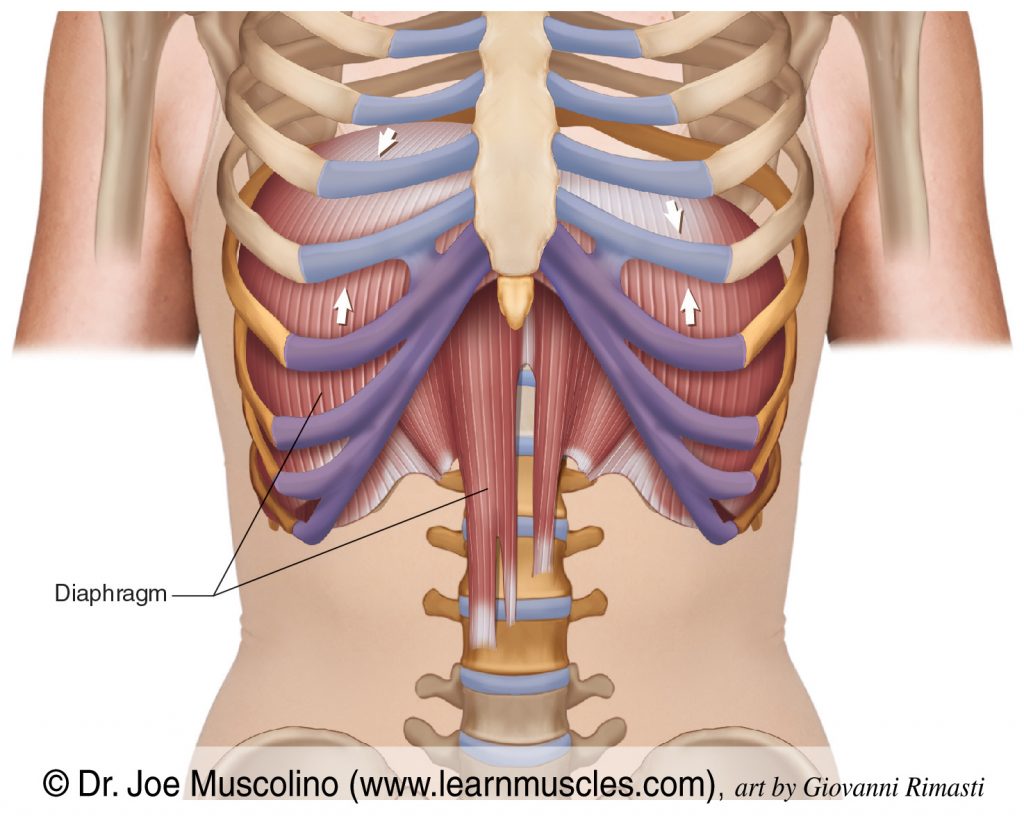- Click here for access to the full Anatomy Glossary.
- Right click on the image for a downloadable file of this muscle.
- Use of this artwork requires proper credit to be given (Permission: Dr. Joe Muscolino. www.learnmuscles.com – art work Giovanni Rimasti)

ATTACHMENTS:
- The diaphragm attaches to the internal surfaces of the sternum, the lower six ribs and their costal cartilages, and L1-L3.
- Its other “attachment” is its central dome.
ACTIONS:
- The diaphragm increases the volume of the thoracic cavity by its central dome dropping down and/or by pulling the rib cage attachment up.
NOTE: It is often stated in trivia questions that the diaphragm is the only skeletal muscle of the human body that is unilateral. But this is technically not true. The diaphragm is innervated by two separate (left and right) phrenic nerves, so it was two muscles that evolved to blend into each other to seemingly form one muscle unilaterally instead of two muscles bilaterally.
